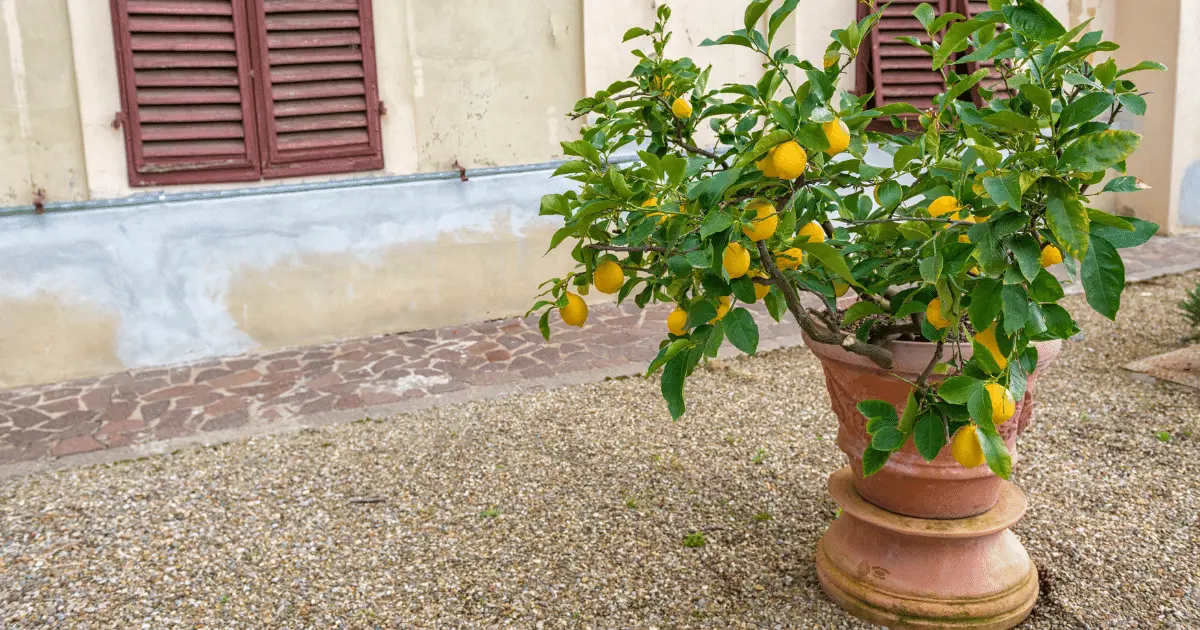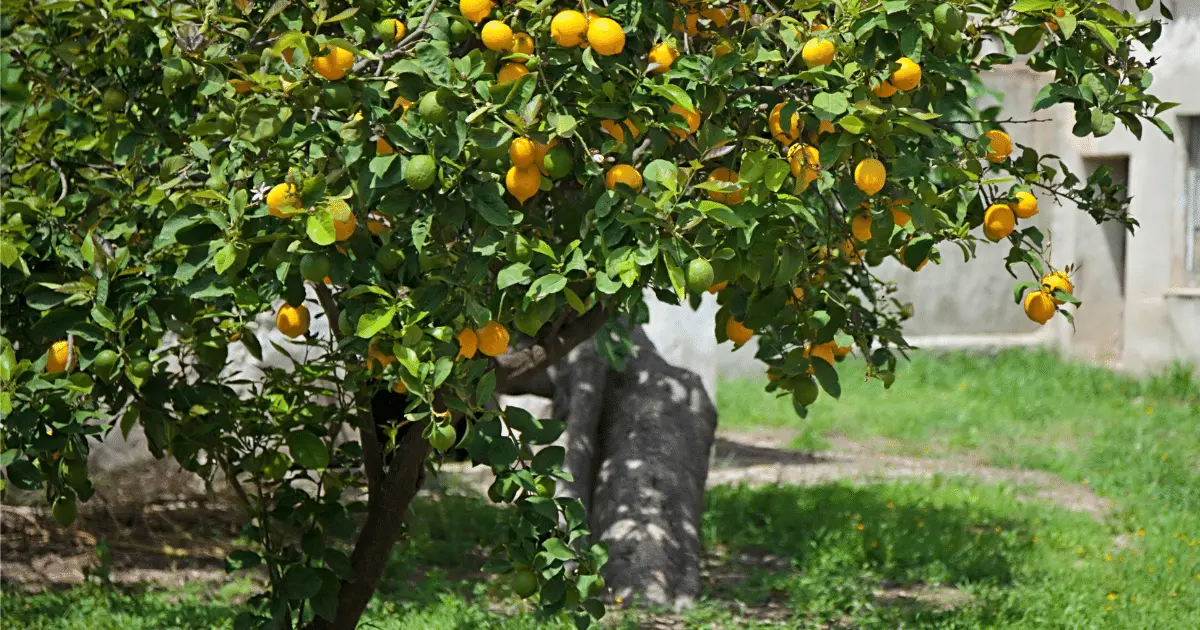Growing lemons at home is a decision that has numerous benefits; they are among the world’s most popular citrus fruits and are easy to grow and fruit quickly. While other people wish to have ready access to lemons as they support weight control, improve digestion, and are heart friendly, Some believe that the aroma of lemon might help decrease stress and improve mood.
However, growing lemons in a pot can come with its challenges. Lemon plants struggle with cold weather, pest attacks, and soil with poor drainage- a condition that is more likely when growing lemons in a container. Read along to discover the best way to grow a lemon tree in a pot.
Planting Lemon Tree in a pot

If you have limited space to plant your lemon tree, growing it in a pot can work just as well. When planting a lemon tree in a pot, remember that it may grow smaller than the one planted on the ground. However, the lemon tree will be healthy if adequately taken care of. Here is a guide to growing lemons in a pot:
Step One: Choosing the Variety to Plant
Selecting a suitable lemon variety could help when planting in a pot. There are several lemon tree varieties, such as the Meyer lemon, eureka lemon, and the Lisbon lemon. However, the favored types for pot planting are the Meyer lemon and the Lisbon lemon. While other varieties can grow to about twenty to twenty-five feet tall, the Meyer lemon grows to only ten to fifteen feet tall., which is ideal for planting in most pots.
Step Two: Choosing the Right pot
Use pots that have suitable drainage holes. Choose sizeable pots so your plant can develop freely and flex its roots. The standard pot size for planting lemons should be about eight to eleven inches wide and twelve to fifteen inches deep.
Step Three: Watering your Lemon Tree
Lemon trees need consistent and regular watering. If adequate water is lacking and the plant is allowed to dry out, the leaves will begin to fall off. The trick is to ensure that the pot has proper drainage, as a soggy pot is also bad for lemon plants.
Pots with draining holes do this well; applying fertilizers is another excellent way to keep your lemon tree healthy and increase soil nutrients and drainage. You can use a slow-release fertilizer to ensure your lemon tree gets all the nutrients it needs.
Step Four: Monitor your Plant
It can be a little stressful for the plant to grow in a pot, so you must keep an eye out since they are more susceptible to sucker branches. Sucker branches are branches extending from the plant’s scion or rootstock. If you notice a sucker branch growing on your lemon tree, prune it immediately.
Step Five: Prune your Lemon Tree.
Prune large lateral branches for fruit growth and pinch foliage to control the shape and encourage bloom, promoting good branch structure. If you are planting a Lisbon lemon tree, you will need regular pruning to maintain a strong canopy and sound food production.
Caring for a Potted Lemon Tree
Depending on rainfall in your locality, lemon trees should be watered weekly, bi-weekly, or even more. Develop a watering schedule to help you keep track. If you are still determining when to water your plant, touch the top two inches of soil and if it is dry, then know that it is time to water your plant.
Another way to regulate the watering of your lemon plant is by using a humidifier or by filling your pot’s saucer with rocks and adding water, placing your plant on the rocks, and ensuring the bottom of the pot is above the water line. Also, cultivate the habit of fertilizing your plant every four to six weeks with a slight nitrogen blend for good health.
Before pruning, sterilize your tools by rubbing alcohol on them to ensure a clean cut for your lemon tree. Lemon trees do better when exposed to direct sunlight, so be mindful of where you place them.
Pests and diseases like root rot, mites, and citrus canker can affect lemon trees, and they are easy to treat, especially with natural solutions. Monitor the plant and clean the leaves. Check for approved fungicides if it needs treatment or removes the dead or diseased areas.
With proper care and attention, your lemons will be ready in a couple of years for you to enjoy their rich taste.
Transplanting a Potted Lemon Tree

If you have adequate space around your home and do not wish to constrict your plant to a pot, you can grow them on the ground. Growing lemon trees in the soil are not much different than doing so in a container as long as you know and apply the basics. Here are a few tips:
Step One: Adequate Temperature
Due to the cold-sensitivity nature of the lemon tree, it is often good to plant lemon trees in the spring after frost. Lemon trees need direct sunlight to grow and produce, so placing them near the south side of your home can protect them from frost. They can be exposed to adequate sunlight, significantly aiding their growth. Tropical and semi-tropical climates are best for lemon trees because they prefer low to medium rainfall while growing in mild winters and warm to dry summer heat.
Step Two: Plant on the Right Soil
Lemon trees are generally soil-tolerant and can survive in almost any soil, but the best and preferred for their healthy growth is slightly acidic well-drained soil.
Step Three: Planting the Lemon Tree
Plant Lemon trees slightly above ground level. However, if you notice that the root is clustered or bound, you can cut across the ball a few times to help loosen the roots and help them to reach for more nutrients in nearby fertile areas. Dig a hole as deep and wide as the root ball, place the lemon tree in the hole, replace the soil, and gently tamper it as you go. You can water and mulch the plant to help it retain its moisture.
Step Four: Watering
Lemon trees require adequate or deep watering at least once every week, aiding the tree’s growth.
